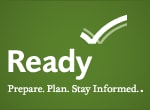Infection Control Guidance for Community Evacuation Centers Following Disasters
These recommendations provide basic infection control guidance to prevent exposure to or transmission of infectious diseases in temporary community evacuation centers.
Community evacuation centers include medium and large-scale, organized, temporary accommodations for persons displaced from their homes (e.g., following natural disasters such as hurricanes, floods, and earthquakes). Evacuation facilities may be residential (e.g., dormitories or campsites) or non-residential (e.g., sports stadiums and churches), with varying degrees of sanitary infrastructure. Individuals in evacuation centers are required to share living spaces and sanitary facilities and may be exposed to crowded conditions. Evacuees may have health problems including traumatic injuries, infectious diseases, and chronic illnesses such as renal failure.
Use of appropriate infection prevention measures by all staff and evacuees can reduce the spread of infectious diseases.
- Staff and residents should wash their hands with soap and water frequently.
- Children should be assisted in washing their hands with soap and water frequently.
- Alcohol hand gels are an effective addition to hand washing, and a reasonable temporary substitute when soap and clean water are not readily available.
- Alcohol hand gel should be positioned throughout the evacuation center, especially at the beginning of food service lines and outside of toilet facilities.
- Encourage good personal hygiene practices including the following:
- Cover your cough with tissues, disposing tissues in the trash, or with your hands. Wash your hands or use alcohol hand gel after coughing. If possible, tissues should be provided in evacuation center living areas.
- Follow good hygienic practices during food preparation.
- Do not share eating utensils or drinking containers.
- Do not share personal care items such as combs, razors, toothbrushes, or towels with any one else.
- Facilities should be adequate to allow residents to bathe at least twice weekly.
- Laundry facilities should be available to allow appropriate laundering of clothes and bed linens.
Hand Hygiene
After an emergency, it can be difficult to find running water. However, it is still important to wash your hands to avoid illness. It is best to wash your hands with soap and water but, when water isn’t available, you can use alcohol hand gels made for cleaning hands. Below are some tips for washing your hands with soap and water and with alcohol hand gel.
When should you wash your hands or use an alcohol hand gel?
- Before eating food.
- After handling uncooked foods, particularly raw meat, poultry, or fish.1
- After going to the bathroom.
- After changing a diaper or cleaning up a child who has gone to the bathroom.
- Before and after tending to someone who is sick.
- Before and after treating a cut or wound.
- After blowing your nose, coughing, or sneezing.
- After handling an animal or animal waste.
- After handling garbage.
Cleaning the Living Area
Keeping surfaces and items clean helps to reduce the spread of infections to residents and staff.
- Clean surfaces with a household detergent when visibly dirty and on a regular schedule:
- Kitchens and bathrooms should be cleaned daily and as necessary.
- Living areas should be cleaned at least weekly and more often if necessary.
- Bed frames, mattresses and pillows should be cleaned/laundered between occupants.
- Other furniture should be cleaned weekly and as needed.
- Spills should be cleaned up immediately
- Sanitize (i.e., reduce microbial contamination to safer levels) high-risk surfaces using a household disinfectant (e.g., a product with a label stating that it is a sanitizer) or a mixture of 1 teaspoon of household bleach in 1 quart of clean water (mixed fresh daily). High-risk surfaces include:
- Food preparation surfaces.
- Surfaces used for diaper changing.
- Surfaces soiled with body fluid (e.g., vomitus, blood, feces)
Laundry
- Garments heavily soiled with stool should be handled carefully, wearing gloves, and placed in a plastic bag for disposal. If stool can easily be removed using toilet paper, the garment may be laundered as described below.
- Wash clothing in a washing machine using normal temperature settings and laundry detergent.
- Household bleach can be used at normal concentrations.
- Dry clothes completely in a dryer.
- There is no need to disinfect the tubs of washers or tumblers of dryers if cycles are run until they are completed.
- Make sure donated clothing is washed before distribution.
Garbage
- Waste disposal should comply with local requirements including disposal of regulated medical waste such as syringes and needles.
- Facilities should provide for proper disposal of syringes and needles used for medications. Containers designed for sharp waste disposal should be placed where sharp items are used. A heavy plastic laundry detergent bottle with a lid may be used if official sharps containers are not available.
- Use trash receptacles lined with plastic bags that can be securely tied shut.
- Trash bags should not be overfilled.
- Place trash in an area separated from the living spaces, preferably in trash bins.
- Have waste pick-ups scheduled frequently—daily, if possible.
- Separate medical waste from household waste for pickup; follow local guidelines for pickup of medical waste.
Non-residential evacuation centers such as stadiums and churches have limited capacity for providing sanitary and food preparation facilities. Bathing and laundry resources are also likely to be limited. In general, it is preferable for non-residential facilities to be used only for very short-term evacuation. Food-service and laundry should be provided from external sources rather than attempting to set up poorly controlled on-site alternatives or allowing residents to attempt these activities individually.
Because of the potentially high ratio of residents to toilets, non-residential facilities have a particular need for frequent and supervised cleaning and maintenance of sanitary facilities. Designated evacuation center personnel should staff each restroom, controlling the number of individuals using the facility at one time, ensuring that surfaces are wiped down with disinfectant at least hourly, and that basic supplies such as hand soap, paper towels, and toilet paper are maintained.
The ability to clean surfaces in non-residential settings may be limited by the size or other physical characteristics of the facility. This increases the importance of hand hygiene. However, such facilities are also likely to have limited availability of hand washing sinks. Thus, additional attention should be paid to positioning alcohol hand gel dispensers in convenient locations throughout the living areas and at the beginning of food service lines, and ensuring that all arriving residents are instructed on their use and availability.
Open sleeping areas should be set up to prevent crowding, ideally with at least 3 feet separating each cot from the next.
The arrival of evacuees who may have open wounds, symptomatic infections, and unrecognized or incubating infectious diseases, combined with potential for crowding and limited sanitary infrastructure, increases the risk of infections spreading among residents and between residents and staff. In particular, respiratory infections, diarrheal diseases and skin infections or infestations are prone to spread under these conditions. Before entering an evacuation center, all residents should be screened for the following conditions:
- Fever
- Cough
- Skin rash or sores
- Open wounds
- Vomiting
- Diarrhea
Persons with any of the above conditions should be admitted to the evacuation center only after appropriate medical evaluation and care. Residents of the center should be instructed to report any of the above conditions to the center staff. If a potentially infectious condition is identified in a person already residing at the evacuation center, the ill individual(s) should be separated from other residents or transferred to a special needs evacuation center (see below). A separate area or room should be identified in advance to be used to house potentially infectious residents awaiting evaluation or transfer. If several residents with similar symptoms are identified, they may be housed together in one area. However, cots should still be separated by at least 3 feet. A dedicated restroom should be identified if possible and reserved for use of the ill individuals only. More than one separate area may be needed if more than one illness is identified in the population, e.g., an area for people with diarrhea, and another area for people with a cough and fever. Such separate areas will need to have extra staff members dedicated to monitoring people housed there and ensuring that the area is kept clean and appropriately supplied.
Staff members with any of the above symptoms should not work in the evacuation center, but should seek medical evaluation for assessment and clearance prior to returning to work. Staff members working with residents who have symptoms of illness should use Standard Precautions (defined below) for any interactions that require potential contact with body fluids, and should place particular emphasis on hand hygiene.
Each evacuation center should have a clear plan for transferring individuals with potentially communicable diseases from the evacuation center to an appropriate healthcare facility. This includes plans for having ill individuals with respiratory symptoms wear a paper mask while awaiting evaluation or transfer. A waiting area should be designated that is separate from the main center living areas, but which can be closely monitored by center staff. A system for identifying and notifying the receiving facility must be in place.
Special-needs evacuation centers are places that can provide safe refuge to those individuals who require supervision by a healthcare professional. They include:
- People with minor health or medical conditions that require professional observation, assessment, and maintenance beyond the capabilities of the general evacuation center staff or facility.
- People with infectious diseases whose care requires protective equipment or isolation that are not available at the general evacuation center.
- People who require assistance with activities of daily living or more skilled nursing care but do not require hospitalization.
- People who need medications or monitoring by health professionals.
Standard Precautions2 should be used whenever working with ill individuals, to protect residents and staff from exposure to recognized and unrecognized sources of infection.
Transmission-Based Precautions, including personal protective equipment (e.g., gloves, masks, and gowns) and isolation of ill individuals in separate rooms or areas, are based on the type(s) of symptoms an ill individual has. These precautions should be used when appropriate in the special-needs evacuation center. If possible, special-needs evacuation center staff should have access to healthcare personnel who are trained in infection control.
See also: Preventing Healthcare-associated Infections.
Footnotes
- Food handlers should wash hands with soap and water before beginning work, and before returning to work from any toilet visit or break. Alcohol hand gel should not be substituted in food handlers.
- Standard Precautions (summary): During the care of any ill individual, personnel should:
- Wear gloves if hand contact with blood, body fluids, respiratory secretions or potentially contaminated surfaces is expected.
- Wear a disposable gown if clothes might become soiled with a patient’s blood, body fluids or respiratory secretions.
- Change gloves and gowns after each patient encounter and wash hands or use alcohol hand gel immediately after removing gloves.
- Wash hands or use alcohol hand gel before and after touching a patient, after touching the patient’s environment, or after touching the patient’s respiratory secretions, whether or not gloves are worn.
- When hands are visibly dirty or contaminated with respiratory secretions, wash hands with soap (either plain or antimicrobial) and water.


